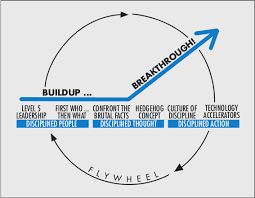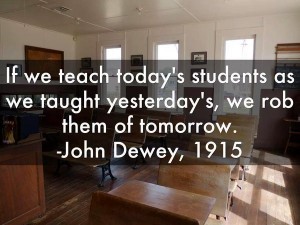“In teaching others, we teach ourselves.”
– Proverb
As a teacher, an advocate, and a supporter of public education, I often think about creating systems and structures that allow our students to reap the benefits of “being in the right place at the right time.” I believe the only way to do that is to ensure that the right place and time is our own classrooms. As I have written often, we educators only have a single school year to make the best possible impact on our students. Students only have one chance to be in kindergarten, first grade, second grade, etc. This means we have just 180 days per year to facilitate learning in the most meaningful way possible. We don’t get do overs – we have tremendous power over our students’ lives, and we have tremendous responsibility to ensure that they are in the right place at the right time, set up to achieve success.
Meeting individual students’ needs is an often-elusive goal for American educators. For as long as I can remember, we’ve been learning about and promoting “differentiated instruction,” or providing different students with varied approaches to learning. Certainly a lofty goal, but our industrial-era school system was designed for groups, not individuals. Consider the classroom design of the typical schoolroom: rows of desks all pointed toward the front of the room. Group instruction is based on rigid  and fixed schedules regulated by bells, mass movement of large groups of students, standardization of assessments and “batch” organization of students. That model served us well from the 1800’s through the 1900’s.
and fixed schedules regulated by bells, mass movement of large groups of students, standardization of assessments and “batch” organization of students. That model served us well from the 1800’s through the 1900’s.
Times are changing. Scores of research reports inform us about more effective ways to facilitate learning, and the buzz around differentiation is growing. Educators and school systems are more interested in how to incorporate differentiation into their approach. The good news is that information on how to differentiate is all around us. Studies focusing on everything from neuroscience to instructional practices inform us of the need to change and the ability to do so.
Early in my career, I published an article that touched on the subject, sharing this story:
With U.S. History Workshop, I was able to teach traditional units of instruction more effectively than before. For example, most U.S. history teachers are familiar with the Civil War and Reconstruction period (roughly 1850-1880). For this and every unit taught with the workshop, I taught the students to view social studies and history as human experiences. This unit, like the others, separates history into five core areas or themes: Civil Rights, Women in History, Science & Technology, Politics, and War & Conflict. I identified key ideas, concepts and so on for each area and allowed student teams to explore these key concepts rather than the whole concept of the Civil War and Reconstruction. Instead of teaching this unit as one big complication, I presented it as one big puzzle–each of the concepts or ideas from each of the areas was like a piece of a puzzle. The challenge for the students was to piece together the puzzle independently, cooperatively, and with direction from the teacher. (Page 11)
I share this experience to provide a conceptual background to passion for meeting students where they are. Fast forward to 2015, and in our classrooms we have differentiation, individualization, and personalization in the mix of instructional improvements.
Another good example of differentiated instruction comes from a third grade classroom I visited recently in our district. After viewing the video Caine’s Arcade, one teacher’s classroom was inspired to spend 30 minutes a day for two weeks working on their voice projects. These students experienced a combination of differentiated instruction (different project for each child/group), individualized instruction (each child’s unique voice and interest came alive in their projects) and personalized instruction (each child had full creative license to produce learning in their own ways).
In addition to this type of engaging and creative lesson planning, our school district also supports digital tools for meeting individual student needs. We have invested time, dollars, resources, planning, training, and support for this transformation of teaching.
To support teacher use of the digital resources to differentiate instruction, our district has intentionally and deliberately acquired services like Discovery Education. We use subscriptions, tools, and programs to support teachers and students. We use combinations of free, open, educational resources as well as paid resources.

Some of the companies with whom we partner are web-based subscriptions, which allow for 24/7 school and home access! The possibilities are endless as we truly become a COMMUNITY of learners.
As a superintendent, I see learning every day and my aim is to support every classroom’s transformation into an engaging, motivating, challenging learning space for our nation’s most precious assets – our children! It’s imperative that we act with urgency to provide the most excellent educational system for ALL children.
I originally posted this at: http://blog.discoveryeducation.com/blog/2015/12/02/defining-differentiation-in-todays-classroom/


 About Mike Lubelfeld (on the Discovery Blog site)
About Mike Lubelfeld (on the Discovery Blog site)